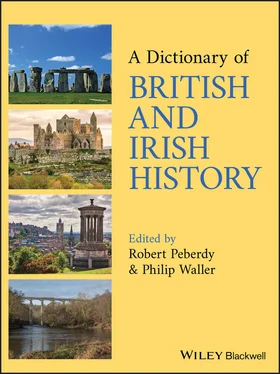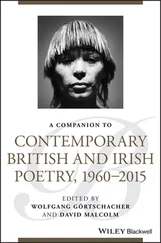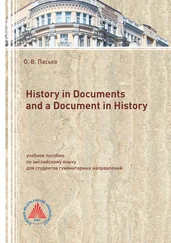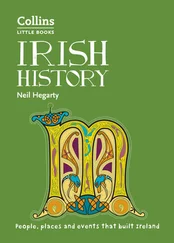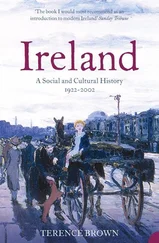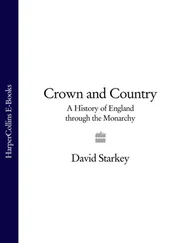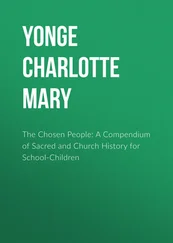(b. 8 June 1955 at London, England). After studying physics at OXFORD University, Berners‐Lee worked in telecommunications and in the COMPUTING industry as a software designer. In 1980, while briefly at CERN (the European particle physics laboratory), he designed a program to store files that included connections between texts (hyperlinks), and on returning in 1984 developed procedures that allowed computers to communicate with each other.
In 1989 Berners‐Lee proposed an arrangement for enabling information to be accessed through the Internet (the recently created global network of interlinked computer networks), using a standard ‘address’ for sources, and he wrote software for the first ‘web server’ and ‘web browser’ (1990–1). Placed in the public domain by CERN in 1993, the system expanded rapidly into the resource called the ‘World Wide Web’. After leaving CERN (1994), Berners‐Lee remained involved in computing, artificial intelligence and Web development. He was elected a fellow of the ROYAL SOCIETY (2001) and knighted (2004).
BERNICIA
A kingdom (6th–7th centuries) which initially occupied modern Co. Durham, Tyne and Wear, and Northumberland (NE England). Bernicia's Brittonic name (of unknown meaning) suggests a British origin (5th or 6th century; see POST‐ROMAN BRITAIN). By the mid 6th century, following moderate Germanic settlement (by ‘Angles'), a Germanic dynasty ruled.
In the 7th century the royal dynasties of Bernicia and DEIRA (to the S) sought to rule both kingdoms. Æthelfrith of Bernicia (ruled 592–616) also ruled Deira from 604. EDWIN of Deira ruled both kingdoms 616–33 (permitted Christianity 619, with short‐lived see at YORK from 627). The kingdoms had separate rulers 633–4 (Eanfrith in Bernicia). OSWALD of Bernicia ruled both kingdoms 634–42 and extended Bernicia northwards ( see GODODDIN). (635, Oswald reintroduced Christianity with see at Lindisfarne; see AIDAN.) OSWIU, ruled 642–70, overcame resistance in Deira. His successor, EGFRITH, annexed Deira (679), creating NORTHUMBRIA. See also KINGSHIP, ANGLO‐SAXON.
BERWICK, (1560) TREATY OFAgreed on 27 Feb. 1560 (at BERWICK‐UPON‐TWEED, adjacent to NE England), between Scotland's pro‐Protestant LORDS OF THE CONGREGATION and English representatives (following the deposition of the Catholic MARY OF GUISE, regent for MARY, QUEEN OF SCOTS). The treaty permitted English intervention against French troops in Scotland while guaranteeing Scotland's independence. Religion was not mentioned. See also EDINBURGH, (1560) TREATY OF; REFORMATION, SCOTLAND. BERWICK, (1639) TREATY OFSigned on 18 June 1639 (at BERWICK‐UPON‐TWEED, adjacent to NE England), between King CHARLES I and leaders of Scottish COVENANTERS. It ended the First Bishops' War. Scots would disband; Charles would withdraw his army and attend a General Assembly of the Church of SCOTLAND and a meeting of the Scottish Parliament. His failure to do so provoked the Second Bishops' War. See also COVENANT, WARS OF THE, OR BISHOPS’ WARS; COVENANTING REVOLUTION. BERWICK‐UPON‐TWEED
(English, meaning ‘Barley farm on R. Tweed'). A coastal town in Northumberland, NE England, on the N bank of the R. Tweed; the chief town on the eastern Anglo‐Scottish BORDER.
Made a BURGH and head of a SHERIFFDOM by King DAVID I (ruled 1124–53), Berwick was until 1296 Scotland's leading international port. It was captured by King EDWARD I of England in 1296; retaken by ROBERT I of Scotland in 1318; captured by EDWARD III of England in 1333 and held until 1461 (ceded by HENRY VI). The English recaptured it in 1482. Berwick was given independent status in 1551, but remained an English garrison town (refortified 1558–69) and was incorporated into England in 1844. Since 1296 it has been mainly a market town.
Est. popn: 1300, 2000; 1600, 1800; 1800, 7000; 1900, 13,400; 2000, 12,800.
BESANT, ANNIE(b. 1 Oct. 1847 at London, England; d. 20 Sept. 1933 at Adyar, Madras Province, India, aged 85). In 1873, after becoming a freethinker, Besant left her clergyman husband and rural home. She moved to London where she collaborated with the atheist Charles BRADLAUGH (1875–86), became a public speaker, and earned notoriety for advocating contraception (see BIRTH CONTROL). A member of the FABIAN SOCIETY, in 1886–8 she helped to unionize unskilled workers (so‐called ‘New Unionism’ movement). From 1889 Besant was involved in the syncretic mysticism of theosophy. In India from 1893, she promoted education, and from 1909 campaigned for Indian independence. She joined the Indian National Congress in 1913 and presided at its national meeting in 1917. See also THEOSOPHICAL SOCIETY. BEUNO(fl. in 7th century; d. perhaps in 642). The founder and abbot of a monastery at Clynnog, GWYNEDD (NW Wales); dedicatee of other churches in N Wales. Beuno was later regarded as a saint. His life was written in Welsh in the 14th century. See also MONASTICISM, MEDIEVAL WALES. BEVAN, BRIDGET(b. probably Oct. 1698 at Carmarthen, Carmarthenshire, Wales; d. 11 Dec. 1779 at Laugharne, Carmarthenshire, aged 81). Of GENTRY stock (born Bridget Vaughan, married 1721), ‘Madam Bevan' was chief patron and adviser of Griffith JONES who launched ‘circulating schools' in the 1730s. She continued them after his death in 1761 and bequeathed £10,000 to perpetuate them. Unfortunately, her will was disputed and, starved of funds, the schools withered. See also EDUCATION, WALES. BEVAN, NYE(b. 15 Nov. 1897 at Tredegar, Monmouthshire, Wales; d. 6 July 1960 at Chesham, Buckinghamshire, England, aged 62). A coalminer, Aneurin Bevan (known as ‘Nye’) became a trade union official and a Labour MP (1929). Famed for radical oratory, he established the British NATIONAL HEALTH SERVICE while minister of health (1945–51) in the post‐war government of Clement ATTLEE. Transferred to the Ministry of Labour in Jan. 1951, he resigned on 21 April in protest at the introduction of health service charges by Hugh GAITSKELL, chancellor of the Exchequer. In Dec. 1955 he unsuccessfully contested the Party leadership, but became deputy leader in 1959 (to Gaitskell). BEVANITESAn informal left‐wing faction within the British LABOUR PARTY, headed by Nye BEVAN. It emerged in March 1952 when 57 MPs voted against the Party’s defence policy. Bevanites opposed increased military spending and German rearmament, but were divided when Bevan voiced approval for ATOMIC WEAPONS (1957). BEVERIDGE, WILLIAM(b. 5 March 1879 at Rangpur, Bengal, India; d. 16 March 1963 at Oxford, Oxfordshire, England, aged 84). Welfare promoter. Concerned about social problems (from 1900s), especially UNEMPLOYMENT, Beveridge worked for the British CIVIL SERVICE from 1908 (knighted 1919). In 1909, he established State‐funded labour exchanges (bureaux for job finding). As director of the London School of Economics (1919–37), he encouraged sociological research with practical applications; while master of University College, OXFORD (1937–44), he returned to government service (1940, during WORLD WAR II). In Dec. 1942, as a committee chairman, Beveridge produced Social Insurance and Allied Services, the visionary ‘Beveridge Report’ which proposed comprehensive welfare provision to eradicate poverty. It was substantially enacted (see WELFARE STATE). Beveridge was a Liberal MP (1944–5), and created Lord Beveridge (1946). ‘BEVERIDGE REPORT’see BEVERIDGE, WILLIAM; WELFARE STATE BEVIN, ERNEST
(b. 9 March 1881 at Winsford, Somerset, England; d. 14 April 1951 at London, England, aged 70). A farm labourer, carter and trade unionist, Bevin in 1921 amalgamated almost 50 unions into the TRANSPORT AND GENERAL WORKERS’ UNION. He served as its general secretary 1921–40. In 1939 he was instrumental in securing trade union support for the UK war effort ( see WORLD WAR II).
Читать дальше
